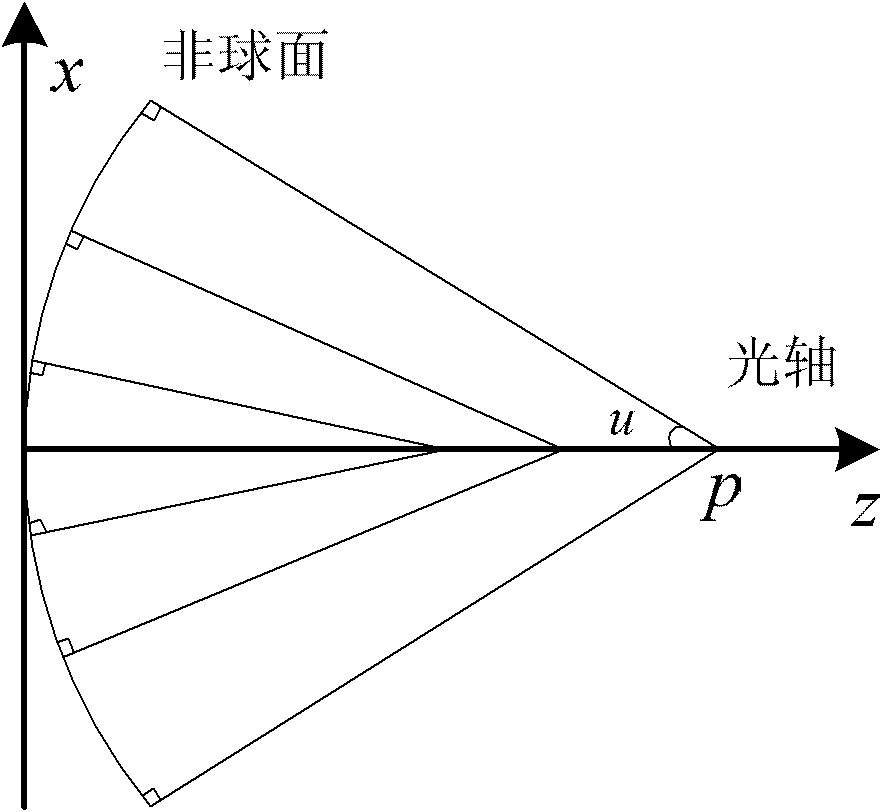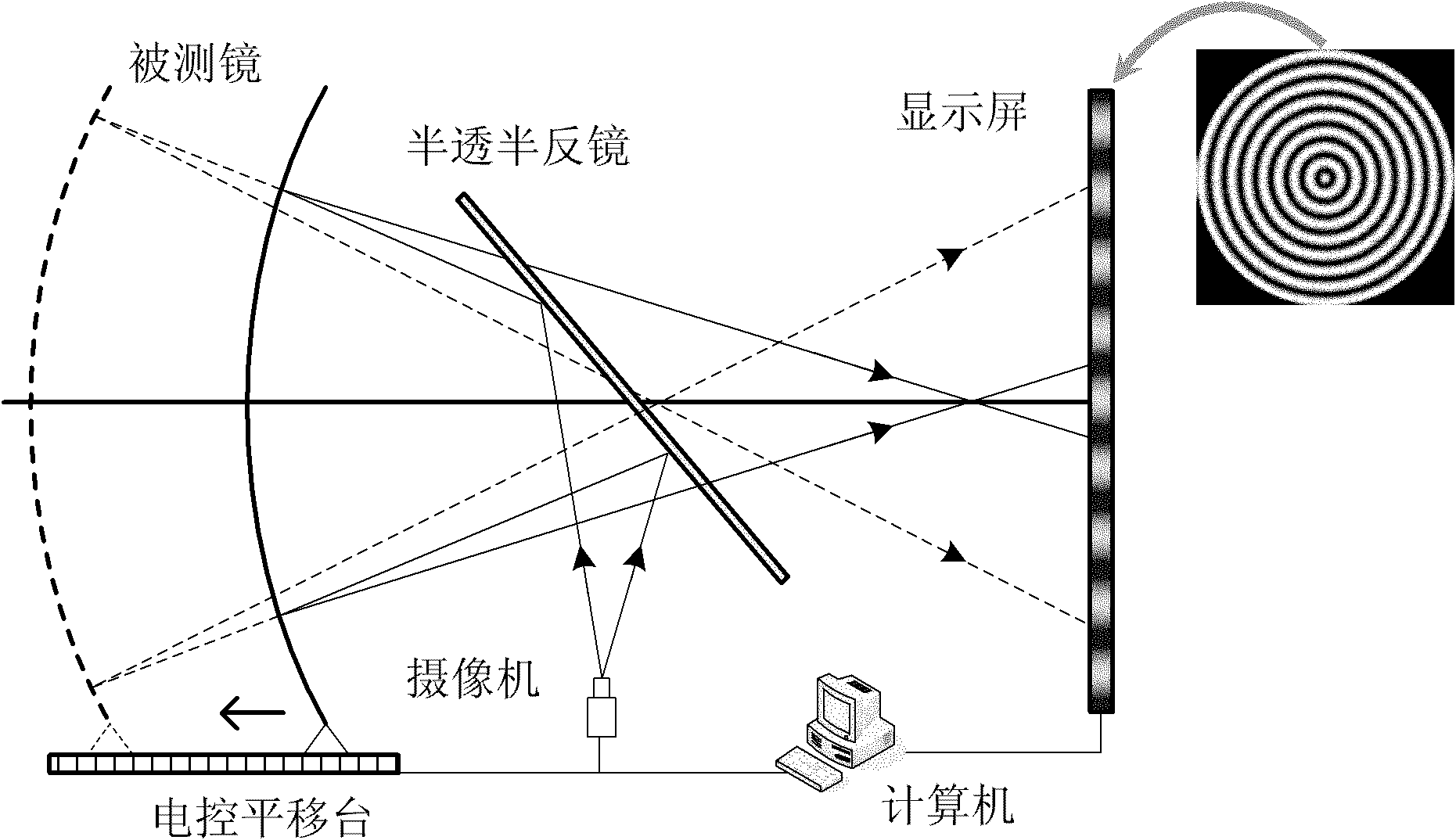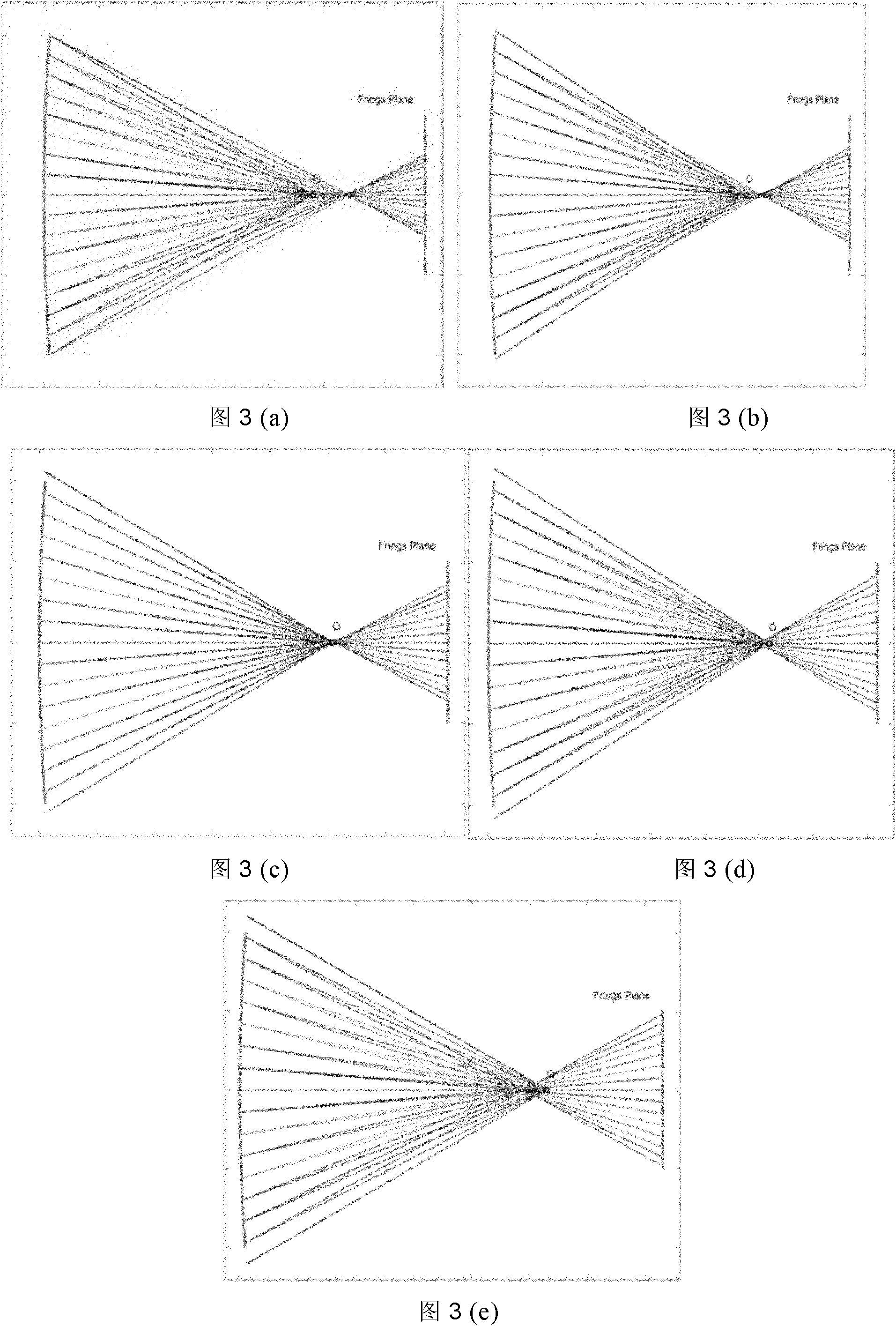Aspherical mirror detection method based on phase measurement deflectometry
An aspheric mirror and detection method technology, which is applied in the detection of aspheric mirrors and the field of optical detection, can solve the problems of high requirements for the environment used, small dynamic range of measurement, and particularly large impact on accuracy, and achieve calculation formulas and calculations. Simple process, large measurement dynamic range, and the effect of suppressing influence
- Summary
- Abstract
- Description
- Claims
- Application Information
AI Technical Summary
Problems solved by technology
Method used
Image
Examples
Embodiment Construction
[0021] Such as figure 1 As shown, in fact, any kind of aspheric surface has a normal convergence, and its normal and the optical axis intersect at different points and form different angles, such as figure 1 Shown. The aspheric surface can not only be characterized by its rectangular coordinate system equation, but also by the longitudinal normal aberration and the angle between the normal and the optical axis. For the convenience of description, the present invention refers to the distance between the aspheric surface vertex and the intersection point of the aspheric surface normal and the optical axis as the normal distance, which is represented by p; the inclination of the aspheric surface normal to the optical axis is called the normal angle, Use u to represent. Obviously, in addition to the rectangular coordinate system, the aspheric surface shape can also be characterized by the property of the normal sink, that is, the continuous function g:p=g(u) between the normal dist...
PUM
 Login to View More
Login to View More Abstract
Description
Claims
Application Information
 Login to View More
Login to View More - R&D
- Intellectual Property
- Life Sciences
- Materials
- Tech Scout
- Unparalleled Data Quality
- Higher Quality Content
- 60% Fewer Hallucinations
Browse by: Latest US Patents, China's latest patents, Technical Efficacy Thesaurus, Application Domain, Technology Topic, Popular Technical Reports.
© 2025 PatSnap. All rights reserved.Legal|Privacy policy|Modern Slavery Act Transparency Statement|Sitemap|About US| Contact US: help@patsnap.com



